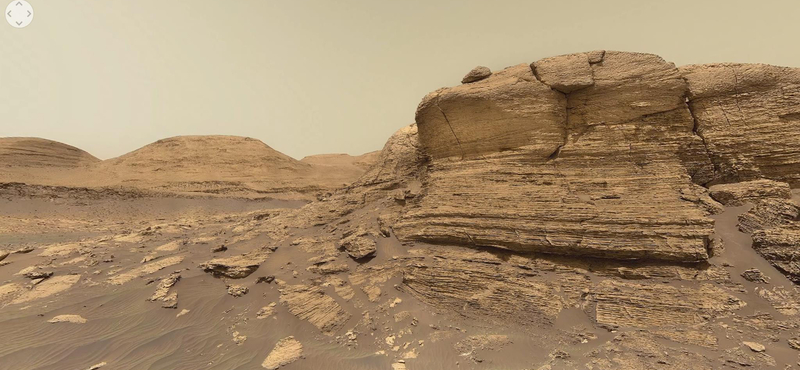[{“available”:true,”c_guid”:”71ceade8-c68c-4f1b-8829-5a6234ad9451″,”c_author”:”hvg.hu”,”category”:”360″,”description”:”Kozma Lilla Rita író, szociális munkás azt állítja, hogy 15 évesen, amikor a Fidelitas tagja volt, Kaposváron szexuális bántalmazás áldozata lett. Egy családos, fideszes helyi önkormányzati képviselőről beszél, aki jelenleg is a közgyűlés tagja. Kozma Lilla Rita egyike annak a hat, ahogy őket nevezik, túlélőnek, aki a kegyelembotrányt követően, szakértőkkel közösen dolgozott ki gyermekvédelmi javaslatokat. Bár nem nevezi meg nyilvánosan a politikust, de háttérbeszélgetéseink alapján sikerült beazonosítanunk az illetőt. A férfit és egy, a beszélgetésben nevesített másik embert telefonon értük el, az ő álláspontjukat a cikk végén olvashatják. Csendes-Erdei Emese interjúja.”,”shortLead”:”Kozma Lilla Rita író, szociális munkás azt állítja, hogy 15 évesen, amikor a Fidelitas tagja volt, Kaposváron szexuális…”,”id”:”20240503_kozma-lilla-kaposvar-fidelitas-fidesz-onkormanyzati-kepviselo-molesztalas-bantalmazas-wmn”,”image”:”https://img.hvg.hu/Img/ffdb5e3a-e632-4abc-b367-3d9b3bb5573b/71ceade8-c68c-4f1b-8829-5a6234ad9451.jpg”,”index”:0,”item”:”91452a63-c48a-49f6-a224-ee3c6787b692″,”keywords”:null,”link”:”/360/20240503_kozma-lilla-kaposvar-fidelitas-fidesz-onkormanyzati-kepviselo-molesztalas-bantalmazas-wmn”,”timestamp”:”2024. május. 03. 06:30″,”title”:”„Kiszálltam a kocsiból, és nem akartam mást, csak hazamenni és lezuhanyozni” – fideszes politikust vádol molesztálással egy volt fidelitasos”,”trackingCode”:”RELATED”,”c_isbrandchannel”:false,”c_isbrandcontent”:false,”c_isbrandstory”:false,”c_isbrandcontentorbrandstory”:false,”c_isbranded”:false,”c_ishvg360article”:true,”c_partnername”:null,”c_partnerlogo”:”00000000-0000-0000-0000-000000000000″,”c_partnertag”:null},{“available”:true,”c_guid”:”fce08ba0-cc4f-46de-8164-ee286f225aec”,”c_author”:”hvg.hu”,”category”:”itthon”,”description”:”A miniszterelnök a Kossuth rádióban beszélt a benzinárról, de még többet a háborúról. Mint mondta, Magyarországnak olyan \”biztonsági megoldást kell találnia, amelyben az oroszok is benne vannak\”. Szerinte most \”háborús, nem pedig békeárak vannak\”. Bírálta a háborúpárti erőket Soroséktől a baloldalig.”,”shortLead”:”A miniszterelnök a Kossuth rádióban beszélt a benzinárról, de még többet a háborúról. Mint mondta, Magyarországnak…”,”id”:”20240503_orban”,”image”:”https://img.hvg.hu/Img/ffdb5e3a-e632-4abc-b367-3d9b3bb5573b/fce08ba0-cc4f-46de-8164-ee286f225aec.jpg”,”index”:0,”item”:”aef7f96a-9fca-4f27-89e5-8679126221e9″,”keywords”:null,”link”:”/itthon/20240503_orban”,”timestamp”:”2024. május. 03. 07:37″,”title”:”Orbán: Az NGO-k és a splekulánsok, Sorosék mind azt nézik, hogy mit lehet kihozni ebből a háborúból”,”trackingCode”:”RELATED”,”c_isbrandchannel”:false,”c_isbrandcontent”:false,”c_isbrandstory”:false,”c_isbrandcontentorbrandstory”:false,”c_isbranded”:false,”c_ishvg360article”:false,”c_partnername”:null,”c_partnerlogo”:”00000000-0000-0000-0000-000000000000″,”c_partnertag”:null},{“available”:true,”c_guid”:”b608dbe9-331c-4942-b181-a0b9636be278″,”c_author”:”hvg.hu”,”category”:”cegauto”,”description”:”Budán és Pesten is lesznek nosztalgiajáratok.”,”shortLead”:”Budán és Pesten is lesznek nosztalgiajáratok.”,”id”:”20240503_visszaternek-nyarra-budapesten-a-kalauzos-villamosok”,”image”:”https://img.hvg.hu/Img/ffdb5e3a-e632-4abc-b367-3d9b3bb5573b/b608dbe9-331c-4942-b181-a0b9636be278.jpg”,”index”:0,”item”:”c8eab3d4-b40d-4c71-a0a2-87397215d0b4″,”keywords”:null,”link”:”/cegauto/20240503_visszaternek-nyarra-budapesten-a-kalauzos-villamosok”,”timestamp”:”2024. május. 03. 19:25″,”title”:”Visszatérnek nyáron a kalauzos villamosok Budapesten”,”trackingCode”:”RELATED”,”c_isbrandchannel”:false,”c_isbrandcontent”:false,”c_isbrandstory”:false,”c_isbrandcontentorbrandstory”:false,”c_isbranded”:false,”c_ishvg360article”:false,”c_partnername”:null,”c_partnerlogo”:”00000000-0000-0000-0000-000000000000″,”c_partnertag”:null},{“available”:true,”c_guid”:”8692f9cb-fa05-4053-b55c-6e0e4c3bd2f6″,”c_author”:”Kovács Gábor”,”category”:”gazdasag”,”description”:”A 64–75 éves korosztályban száz nyugdíjasból tíz dolgozik, a kormány szerint ez a „munkavállalást támogató politikájának” köszönhető. Nagy Márton miniszter 2030-ra 300 ezer fővel növelné a foglalkoztatottak összlétszámát – az EU-nak beadott konvergenciaprogram előrejelzése szerint ez irreális célkitűzés.”,”shortLead”:”A 64–75 éves korosztályban száz nyugdíjasból tíz dolgozik, a kormány szerint ez a „munkavállalást támogató…”,”id”:”20240503_a-kormany-nagyon-buszke-ra-hogy-itt-dolgozik-a-legtobb-nyugdijas-a-v4-csoportban”,”image”:”https://img.hvg.hu/Img/ffdb5e3a-e632-4abc-b367-3d9b3bb5573b/8692f9cb-fa05-4053-b55c-6e0e4c3bd2f6.jpg”,”index”:0,”item”:”50b54c38-cbd7-49a7-b1b7-a4561ffe096b”,”keywords”:null,”link”:”/gazdasag/20240503_a-kormany-nagyon-buszke-ra-hogy-itt-dolgozik-a-legtobb-nyugdijas-a-v4-csoportban”,”timestamp”:”2024. május. 03. 05:24″,”title”:”A kormány nagyon büszke rá, hogy itt dolgozik a legtöbb nyugdíjas a V4-országok közül”,”trackingCode”:”RELATED”,”c_isbrandchannel”:false,”c_isbrandcontent”:false,”c_isbrandstory”:false,”c_isbrandcontentorbrandstory”:false,”c_isbranded”:false,”c_ishvg360article”:false,”c_partnername”:null,”c_partnerlogo”:”00000000-0000-0000-0000-000000000000″,”c_partnertag”:null},{“available”:true,”c_guid”:”565bd522-4c6d-40eb-befb-170e69be148b”,”c_author”:”hvg.hu”,”category”:”elet”,”description”:”Schneller Domonkos rendelkezése az anyák napi jegykedvezményhez kapcsolódik. Lapunknak a múzeum azt írta: az intézmény feladata közös múltunk értékeinek védelme, a főigazgatói utasítás – az Alaptörvény szövegével összhangban – pedig ennek a küldetésnek tesz eleget.”,”shortLead”:”Schneller Domonkos rendelkezése az anyák napi jegykedvezményhez kapcsolódik. Lapunknak a múzeum azt írta: az intézmény…”,”id”:”20240503_a-magyar-muszaki-es-kozlekedesi-muzeum-foigazgatoja-utasitasba-adta-hogy-az-apa-ferfi-az-anya-no”,”image”:”https://img.hvg.hu/Img/ffdb5e3a-e632-4abc-b367-3d9b3bb5573b/565bd522-4c6d-40eb-befb-170e69be148b.jpg”,”index”:0,”item”:”fbd43d27-eea7-4942-b27b-0e8ae49d32ce”,”keywords”:null,”link”:”/elet/20240503_a-magyar-muszaki-es-kozlekedesi-muzeum-foigazgatoja-utasitasba-adta-hogy-az-apa-ferfi-az-anya-no”,”timestamp”:”2024. május. 03. 15:39″,”title”:”A Magyar Műszaki és Közlekedési Múzeum főigazgatója utasításba adta, hogy „az apa férfi, az anya nő””,”trackingCode”:”RELATED”,”c_isbrandchannel”:false,”c_isbrandcontent”:false,”c_isbrandstory”:false,”c_isbrandcontentorbrandstory”:false,”c_isbranded”:false,”c_ishvg360article”:false,”c_partnername”:null,”c_partnerlogo”:”00000000-0000-0000-0000-000000000000″,”c_partnertag”:null},{“available”:true,”c_guid”:”9ce40ddd-2cfb-430b-9bce-cd229c3f9252″,”c_author”:”hvg.hu”,”category”:”gazdasag.zhvg”,”description”:”Tömegével támadtak rá lovakra méhek a győr-moson-soproni Ivánban, három állat el is pusztult. A gazda gyászol, a méhek tulajdonosa hallgat.”,”shortLead”:”Tömegével támadtak rá lovakra méhek a győr-moson-soproni Ivánban, három állat el is pusztult. A gazda gyászol, a méhek…”,”id”:”20240503_mehek-tamadas-ivan-meheszet-lovaszat-lohalal”,”image”:”https://img.hvg.hu/Img/ffdb5e3a-e632-4abc-b367-3d9b3bb5573b/9ce40ddd-2cfb-430b-9bce-cd229c3f9252.jpg”,”index”:0,”item”:”afff4840-2f6a-4741-977b-fd98647a71b6″,”keywords”:null,”link”:”/zhvg/20240503_mehek-tamadas-ivan-meheszet-lovaszat-lohalal”,”timestamp”:”2024. május. 03. 09:36″,”title”:”Halálra csíptek több lovat a méhek Ivánban”,”trackingCode”:”RELATED”,”c_isbrandchannel”:false,”c_isbrandcontent”:false,”c_isbrandstory”:false,”c_isbrandcontentorbrandstory”:false,”c_isbranded”:false,”c_ishvg360article”:false,”c_partnername”:null,”c_partnerlogo”:”00000000-0000-0000-0000-000000000000″,”c_partnertag”:null},{“available”:true,”c_guid”:”a5503ea3-e355-4acb-af51-76350c296a1c”,”c_author”:”hvg.hu”,”category”:”gazdasag”,”description”:”A miniszterelnök magánszemélyként Mészáros Lőrinc-közeli szerkesztőségek ellen is eljárást kezdeményezett.”,”shortLead”:”A miniszterelnök magánszemélyként Mészáros Lőrinc-közeli szerkesztőségek ellen is eljárást kezdeményezett.”,”id”:”20240503_orban-viktor-beperelt-feltucat-szerkesztoseget-a-klubradiotol-az-indexig”,”image”:”https://img.hvg.hu/Img/ffdb5e3a-e632-4abc-b367-3d9b3bb5573b/a5503ea3-e355-4acb-af51-76350c296a1c.jpg”,”index”:0,”item”:”0bddcf1c-17c7-4ef4-bf93-d1c533644b2f”,”keywords”:null,”link”:”/gazdasag/20240503_orban-viktor-beperelt-feltucat-szerkesztoseget-a-klubradiotol-az-indexig”,”timestamp”:”2024. május. 03. 08:52″,”title”:”Orbán Viktor beperelt féltucat szerkesztőséget a Klubrádiótól az Indexig “,”trackingCode”:”RELATED”,”c_isbrandchannel”:false,”c_isbrandcontent”:false,”c_isbrandstory”:false,”c_isbrandcontentorbrandstory”:false,”c_isbranded”:false,”c_ishvg360article”:false,”c_partnername”:null,”c_partnerlogo”:”00000000-0000-0000-0000-000000000000″,”c_partnertag”:null},{“available”:true,”c_guid”:”758b288e-0118-4edf-a0a7-2a038463f5a6″,”c_author”:”hvg.hu”,”category”:”itthon”,”description”:”Választási hirdetéseket tépett le és firkált össze egy férfi Józsefvárosban, míg tetten nem érték.”,”shortLead”:”Választási hirdetéseket tépett le és firkált össze egy férfi Józsefvárosban, míg tetten nem érték.”,”id”:”20240503_elfogtak-a-jozsefvarosi-plakattepkedot-szazat-tett-tonkre”,”image”:”https://img.hvg.hu/Img/ffdb5e3a-e632-4abc-b367-3d9b3bb5573b/758b288e-0118-4edf-a0a7-2a038463f5a6.jpg”,”index”:0,”item”:”1ea2013d-d30b-4423-98ec-cf33ed7e5afa”,”keywords”:null,”link”:”/itthon/20240503_elfogtak-a-jozsefvarosi-plakattepkedot-szazat-tett-tonkre”,”timestamp”:”2024. május. 03. 09:17″,”title”:”Elfogták a józsefvárosi plakáttépkedőt: százat tett tönkre”,”trackingCode”:”RELATED”,”c_isbrandchannel”:false,”c_isbrandcontent”:false,”c_isbrandstory”:false,”c_isbrandcontentorbrandstory”:false,”c_isbranded”:false,”c_ishvg360article”:false,”c_partnername”:null,”c_partnerlogo”:”00000000-0000-0000-0000-000000000000″,”c_partnertag”:null}]

We recommend it from the first page

Balint Kovacs
group
He cannot run for the New Alternative People's Party and the People's Party.

The webcam is operated by the Municipality of Debrecen.

Now he talks about the government's “deafening silence.”

The comedian is out with a new video, this time with a news report that's over four minutes long.

This feat was accomplished for the fourth time.












































